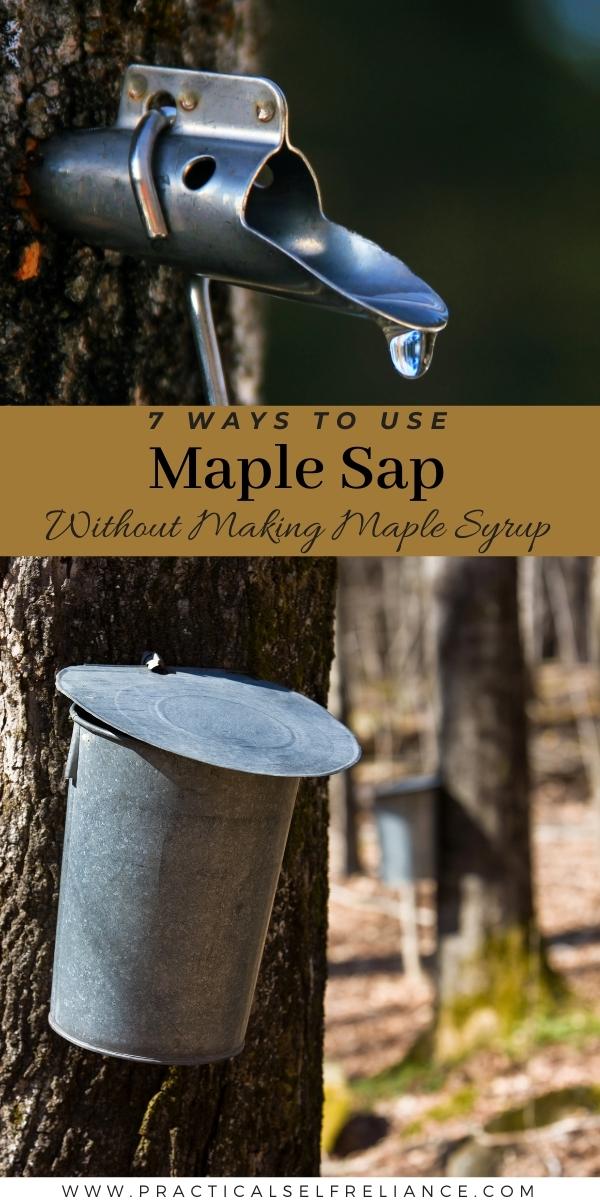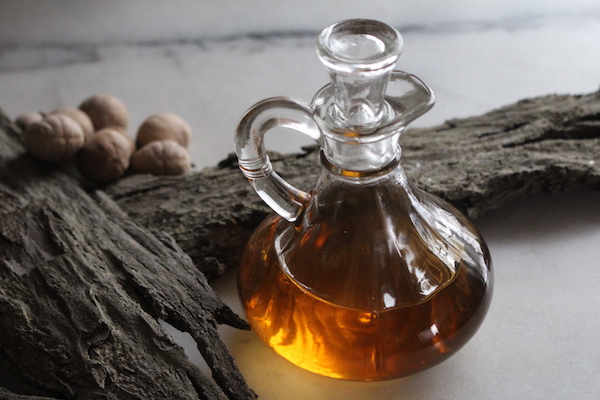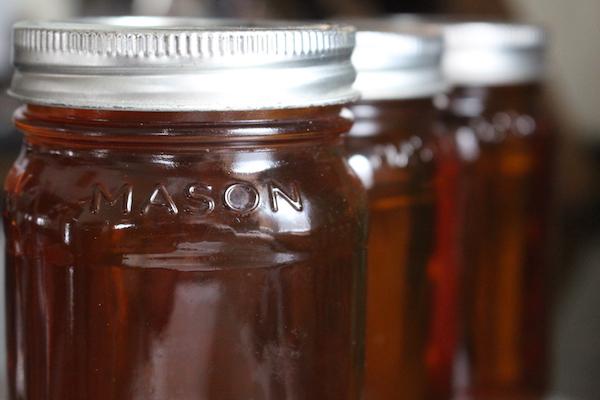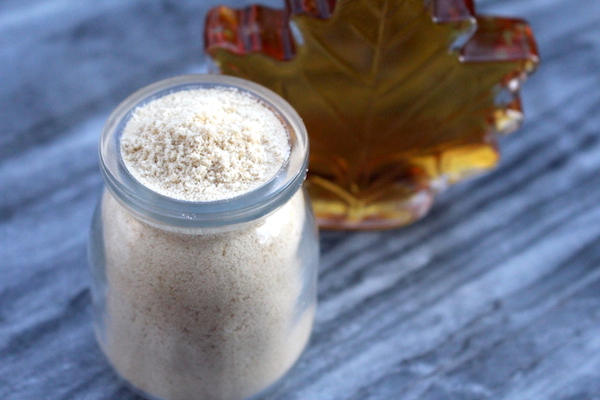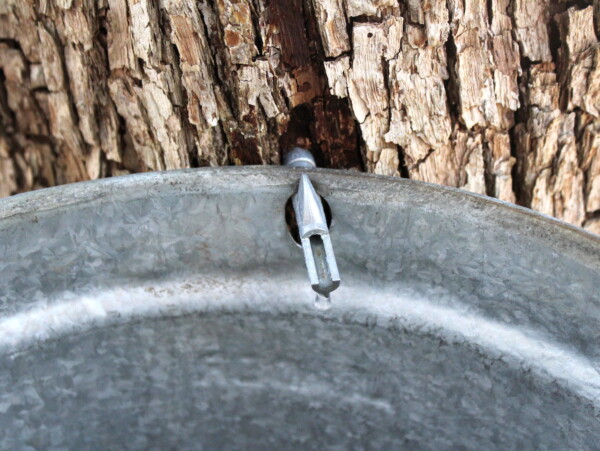Affiliate disclosure: This post may contain affiliate links. Please see our Privacy Policy.
Maple sap can be used to make lots of delicious (and useful) things, even if you don’t have an evaporator. Boiling maple sap into syrup is time and energy-intensive, but tapping backyard trees can be a fun project even if you never make syrup!
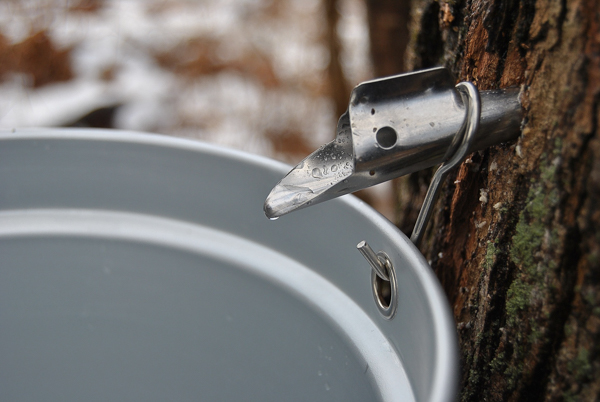
Vermont’s well known for its maple trees, and thousands of gallons of maple syrup are produced in this state every year. Many Vermonters tap maple trees for fun, but not all of them make maple syrup.
Tapping maple trees is a lot easier than making maple syrup, and all you need is a simple tree tapping kit to extract the maple sap.
Some people just drink the sap as it is, and kids are especially fond of drinking the sweet drips right from the tree. Beyond just enjoying this refreshingly sweet spring tonic, there are plenty of uses for maple sap in the kitchen.
Using Tree Sap
Maple sap is delicious in its own right, and you don’t have to make maple syrup to enjoy this fun springtime activity. While there are plenty of ways to make maple syrup without an evaporator, the homemade syrup is only one way to enjoy tapping season.
Beyond maple trees, there are at least 27 types of trees that can be tapped for syrup, including birch trees, ironwood trees, butternuts trees, and black walnut trees.
Birch syrup is sweet and fragrant, with high concentrations of fructose (maple sap is mostly glucose). Beech syrup tastes like butterscotch to me, and Ironwood syrup is warm with notes of cardamom. The syrup of nut trees like butternut and black walnuts is rich and almost nutty.
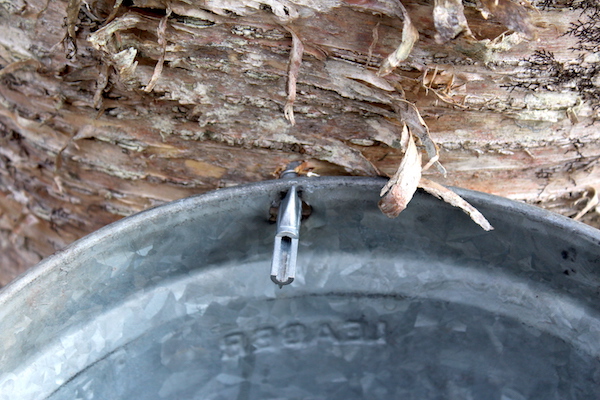
The flavor of the finished syrup is evident in the fresh sap, though at much lower concentrations. The sap of any tappable tree, maple as well as others, is delicious and can be used to make all manner of homemade deliciousness.
So what can you do with maple sap?
Drinking Maple Sap
Fresh maple sap is absolutely delicious right from the tree. It contains low levels of sugar, around 1 to 3%, making it just barely sweet with the characteristic flavor of maple.
Maple sap is cooked down at a ratio of 40 to 1 to make syrup, so that means you need about 40 gallons of sap to make 1 gallon of syrup. That means for every 2 1/2 cups (20 oz) of sap is equivalent to about 1 tablespoon of syrup.
That’s a lot less sweet than soda, and it incorporates the natural minerals in maple sap for a nutrient boost.
Some people choose to briefly boil the sap to sterilize it after it comes out of the taps, and that’s a matter of personal choice. Be sure to use fresh sap, as it’ll start to ferment quickly (in about 24 hours).
Sap Seltzer and Soda
A little carbonation goes a long way, and it’s easy enough to make your own sap soda. It’s quite popular in the Northeast, and there are even companies that can carbonate maple sap seltzer.
To make your own, you’ll need something like an inexpensive countertop soda stream machine that carbonates just about anything to make homemade seltzer and soda.
For something closer to soda, add a bit of maple syrup, or keep it more like a lightly sweetened seltzer by just using maple sap.
You can also make a naturally fermented soda with maple sap, using water kefir grains, a ginger bug, or just a tiny bit of yeast.
Maple Coffee or Tea
Maple sap can be used in any recipe that uses water for a slightly sweet, mineral boost. Making coffee or tea with maple sap is especially popular, as it adds a lot of flavors that complement the natural flavors in the drink already.
Simply replace the water in your coffee maker (or the water in your tea kettle) with maple sap.
It’s just one more fun way to use maple sap during the season, and it’s a special treat for a short while.
Maple Sap Wine (& Mead)
Birch beer is a traditional drink that most people have heard of at some point, and it tastes a lot like cream soda. It’s made with birch sap (and twigs).
You can do the same thing with maple sap, but what to call it is a bit tricky. Some people just call it maple sap wine, others call it maple mead. Mead is a type of honey wine, and by substituting maple syrup in for the honey you can make mead with syrup (and sap) instead.
Making homemade beer with maple sap is fun too, just replace the water in the recipe with fresh maple sap for a unique flavor.
The Sugar Makers Companion has detailed recipes for making beer, wine, mead, and liqueur from maple sap. There’s a text extract from the book here that has some of that information summarized.
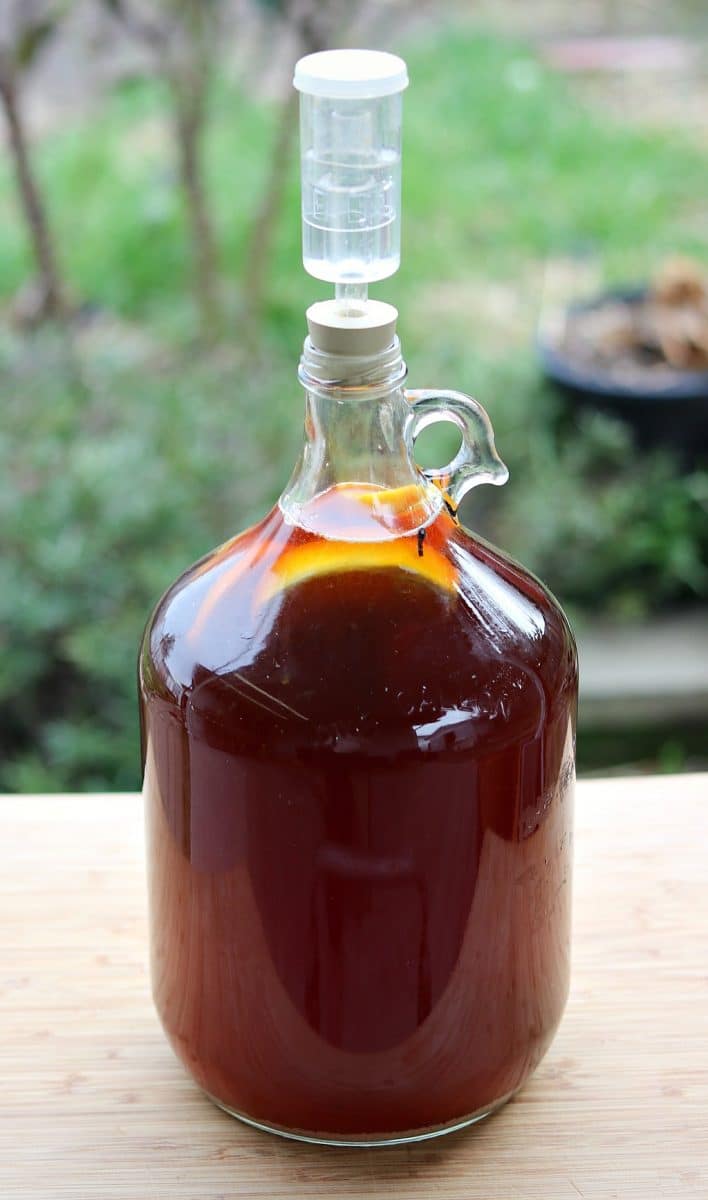
Sap Vinegar
Where there’s wine, there’s bound to be vinegar. When acetic acid bacteria innoculate wine it’ll turn to vinegar over time, and you can speed the process along if that’s your goal.
To make maple vinegar, follow the same process you’d use for making fruit vinegar or homemade apple cider vinegar. You’ll need to add a good bit of sugar or maple syrup to bring the sugar levels up so that the vinegar will be strong enough to keep (very light vinegar can spoil, believe it or not).
You can also add a neutral spirit like vodka, which increases the alcohol level, and it’s the alcohol that’s converted to vinegar. Forager chef has a detailed recipe for maple sap vinegar that does just that, resulting in a mostly maple sap product without a lot of added maple syrup.
Maple Sap Marinade (or Salad Dressing)
Marinades are a great way to incorporate flavor into meat and vegetables, and sap makes a lovely marinade for all manner of delicious meals. It has a small amount of sugar, but plenty of maple flavor that goes a long way.
You can also add maple sap to salad dressings in the same way.
Cooking with Maple Sap
Historically, maple sap was used as a braising liquid for meats and spring vegetables. The sap would be used instead of water, and it would slowly cook down and infuse into the meal.
I’m not talking cooking it down enough to make a syrup, just simmering food in sap until it was slightly concentrated and flavorful (but nowhere near syrup).
These days we tend to keep our savory and sweet flavors separate, but back in the day, it was incredibly popular to use sugar or honey when cooking meat. Some of those recipes are still around today in the form of mincemeat pie and honey-glazed ham.
Really anywhere you’d use water you can use maple sap in your cooking. Braising meats is one option, but maple sap also works well as a base for soup (like butternut squash soup, for example).
I’m particularly fond of cooking carrots in maple sap, and we’ll use last year’s storage carrots from our root cellar that have sweetened over the long winter. The recipe bridges two seasons and forms a nice conclusion to our winter stores.
Foraged Food Recipes
Looking for more ways to incorporate wild food into your diet?
- 70+ Venison Recipes
- How to Make Birch Bark Flour
- 12+ Ways to Use Chokecherries
- How to Make Acorn Flour
- 40+ Wild Plants You Can Turn into Flour
